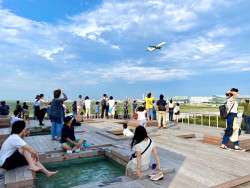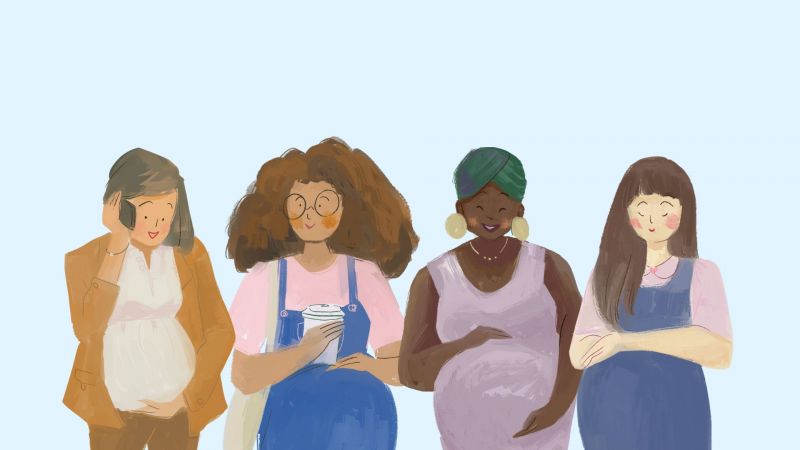
November 27, 2025
Giving Birth in Japan as a Foreigner
Five women share their pregnancy stories
An extra line on a pregnancy test is a life-changing event, and it’s rather common for expectant parents to feel extra anxious when having a baby in a foreign country. In Japan, navigating through the health care and social support system can not only be daunting but also confusing with the different types of medical facilities, government subsidies, hospital reservation and pregnancy/infant registration procedures.
Amidst the many things to worry about before the baby arrives, it’s helpful to read and learn from mothers who have already been through these experiences. Here is a compilation of five stories of women from different backgrounds who share all the smiles and tears of their pregnancy journeys in Japan.
How did you choose a hospital or clinic for check-ups and delivery in Japan?
As with Japanese mothers, medical institutions are frequently selected by international mothers based on reputation, as conveyed through word of mouth and proximity to home. The types of service provided at these facilities can vary widely, from standard to five-star hotel-like, and many clinics and hospitals post photographs of their rooms and meal services on their websites for you to check out. In case you decide to change to a different clinic halfway through your check-ups, or deliver at a hospital where you didn’t have your check-ups, like Aline and Roseane, you will need a referral letter (紹介状, shōkaijō) from the doctor of your current hospital or clinic, which should be submitted to the new facility.
Ruth, 37 years old, Ecuadorian
“Out of convenience, I chose the hospital closest to my home for my prenatal checkups and delivery, also because I know some women who had babies at the same place and they told me that they had positive experiences there.”
Happy, 37 years old, Tanzanian
“I first went to a ladies’ clinic that I found through Google. After confirming that I was pregnant, I went to my local city office to notify them of my pregnancy. The staff there told me that if I went to a private clinic for maternity checkups and delivery I would end up having to pay more than a public hospital. Therefore, they recommended to me the biggest general hospital in the region, near the Odakyu line.”
Roseane, 32 years old, Brazilian
I actually started my first checkups at a clinic, but in my fourth month of pregnancy, I decided to transfer to a hospital — which wasn’t a difficult process — and have my delivery there because I believed they would provide better support. The hospital that I chose has a good reputation among mothers who have had deliveries there and is well-equipped in case of medical emergencies.
Chiaki, 29 years old, Filipino-Japanese
“I Googled the hospitals and clinics here in Mito, Ibaraki, and then checked the reviews for each one. I first went to a small clinic, and when speaking to the doctor there. He suggested that I go to a bigger hospital because it’s my first time and because of my weight. The one he recommended was the Red Cross Hospital in Mito.”
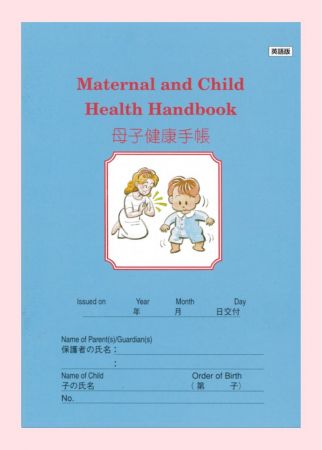
Aline, 25 years old, Japanese-Brazilian
“For my first pregnancy, I looked for a clinic close to home, and I ended up finding one that some friends recommended, only five minutes away from my house, so I started my checkups there. At 35 weeks, the doctor warned me that I would probably need a C-section because of my short height, narrow pelvis, and the size of the baby. After hearing that, I talked with friends and acquaintances who had already had a C-section in Japan and learned from them that it is very common here to have a vertical incision instead of a horizontal one, which concerned me, because the recovery process of a vertical cut tends to be longer and more painful, and can result in greater complications.
I then asked the doctor at the clinic, which only did C-sections with vertical incisions, if he could give me a letter of recommendation for a hospital that performs horizontal cuts, as it is common in Brazil. I was then referred from the clinic to the hospital, a process that is not difficult to do — especially because of the maternity handbook (see left image), which records all of your health information as well as that of the baby’s, and can be handed to your next doctor. If you request it, the local ward office can provide you with a maternity book in languages other than Japanese. Then for my second pregnancy, I opted to have both the checkups and delivery directly at the hospital.”
As mentioned by Aline, the Mother and Child Health Record Book (母子手帳, boshi-techo or 母子健康手帳 boshi kenkou techou), is a handbook given to you upon registering your pregnancy at your local municipal office that should be taken with you to every doctor appointment you have. This maternity handbook, standardized across Japan, records all health information, including hospital visits and immunizations, until the child enters primary school. It is available in English, Korean, Chinese, Thai, Tagalog, Portuguese, Indonesian and Spanish.

What are your thoughts on the cost of having a child in Japan and the incentives available?
In Japan, pregnancy is not covered under the National Health Insurance; however, there are plenty of incentives available for expecting mothers, and many parents actually end up making money thanks to all the government funding and benefits available. The problem is, many international residents are not familiar with all of these benefits and subsidiaries.
Regardless of their nationality, parents in Japan are entitled to a subsidy of ¥420,000 per child, that is called the Childbirth and Childcare Lump-Sum Grant (出産育児一時金, shussan ikuji ichikin). They can claim the allowance as long as they are enrolled in a health insurance plan from either the government (kokumin hoken) or an employer (shakai hoken). You should note, however, that the total hospital expenses may vary depending on the day and the time you’re hospitalized, as mentioned by Ruth, and the type of room you chose, as Aline notes in the next question. For mothers with a scheduled C-section like Aline, they can also apply for an allowance for sizable medical expenses called “High-Cost Medical Expense Benefit” (限度額適用認定証, gendogaku tekiyou ninteisho) and you can find out more about it through her answer.
Ruth
“The costs of having a baby in Japan, in my opinion, are kind of expensive compared to my native country if you don’t have a Japanese health insurance plan to be able to claim government subsidies. They can also vary significantly depending on the day that you are admitted. For example, the weekend is much more expensive than weekdays, and being admitted past midnight is also costlier. My delivery came to ¥420,000, which is the exact same amount as the childbirth lump-sum allowance. However, if I didn’t have Japanese health insurance, I would have had to pay the full cost of my delivery by myself.”

Happy
“Compared to my country, Japan is quite expensive, and we were especially burdened by the fact that my husband was still doing his graduate studies during my pregnancy. Though the government provides support, you have to cover additional costs out of your own pocket. For example, the city office where you registered your pregnancy will give you maternity vouchers for a discount on your checkups, but they don’t cover the cost completely, of course. Depending on the type of examination required, a check-up could be ¥10,000, and the discount vouchers might cover only about half or less of that amount. As for the childbirth lump-sum allowance, in my case, I had some complications during birth, and my baby had to be transferred to a different hospital after delivery. The total cost of my delivery was ¥5,000 short of the government allowance, and I didn’t have to pay any additional amount for my baby’s hospitalization since children have free healthcare in Japan.”
Roseane
“Before finding out about the government subsidies, I thought I would need to save a lot of money in order to have a baby in Japan. After I claimed the childbirth lump-sum allowance, I only needed to pay a small difference because I delivered late at night on a weekend.”
Chiaki
“It’s very good. In addition to the childbirth subsidy, the government provided prenatal check-up coupons. With these coupons, my checkups were mostly free of charge, and I received an additional free check-up a month after pregnancy. My baby and I also received free immunization shots.”
Aline
“I think Japan is great for people who want to have children because there are many incentives that the government provides if you have health insurance. In my case, in addition to the ¥420,000 grant, because I needed to have a C-section, I was also able to receive the “High-Cost Medical Expense Benefit” subsidy for people who need to undergo high-cost surgery or treatment. This allowance is also only available to people with health insurance. If you have kokumin hoken you can apply at your local ward office or if you have shakai hoken, you need to contact your office or company about the subsidy. With these two allowances, I was able to have all the expenses of my delivery completely covered by the government.”
As Happy and Chiaki mentioned above, the government provides expecting mothers with “maternity coupons” (妊産婦健康診査費用補助券, ninsanpu-hoken-hiyo-hojoken) or discount vouchers that can be used at the hospitals and clinics to reduce the cost of prenatal check-ups. They’re handed to you along with the Mother and Child Health Record Book upon notifying your pregnancy at your local ward office.
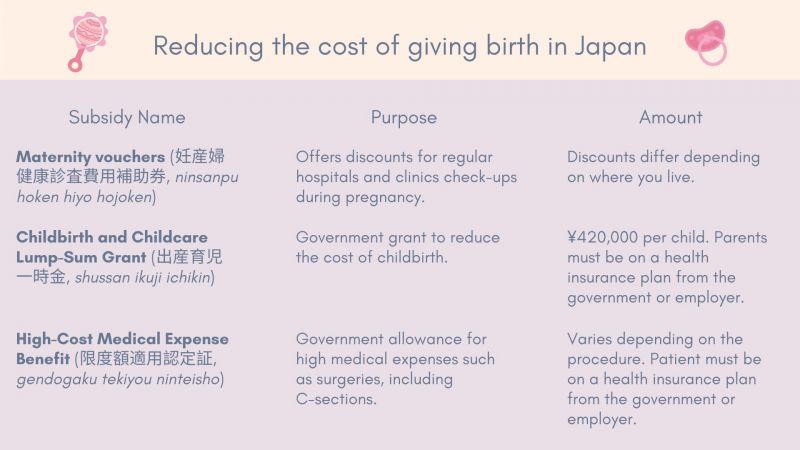
How was the process of reserving the delivery at the hospital/clinic?
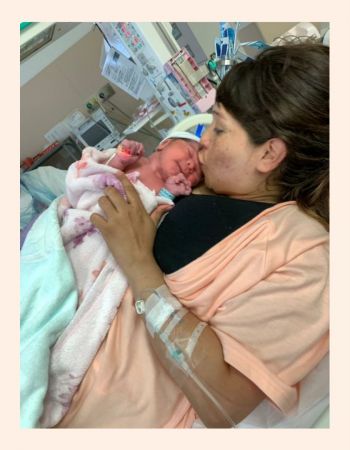
Unlike other countries, many popular clinics and general hospitals in Japan may require their pregnant patients to make a reservation (分娩予約, bunben-yoyaku) ahead of the expected delivery date due to the limited number of beds. For this reason, you may wish to check with your doctor and begin inquiries as soon as you find out about your expected delivery date. Additionally, as mentioned by Ruth below, the childbirth lump-sum allowance you receive can be directly deposited to the medical institution through a direct payment system to reduce the burden of a possibly large payment.
Ruth
“I was informed that, before booking the hospital, I first needed to have a prenatal checkup. I chose to do the checkups and delivery at the same hospital to make things easier for me, and the childbirth lump-sum subsidy was directly deposited to the hospital of my choice.”
Happy
“It was not a problem for me. You first confirm that you’ll be giving birth at the same place where you’re having your regular checkups and then, once you’re approaching your expected delivery date, you make a reservation.”
Roseane
“Booking the delivery at the hospital was easy since I had had my checkups there since my fourth month of pregnancy.”
Chiaki
“The first clinic I went to, owned by an elderly doctor, was not welcoming at all, which left me with a bad impression of small clinics here in Japan. However, the staff at the Red Cross Hospital were very nice and kind, as well as open-minded to all cultures and beliefs. They asked me many questions, including some about my faith and what kind of food I can or cannot eat. Also, I wanted to breastfeed my baby as much as possible, and they were very supportive of my decision. It was a really good hospital overall.”
Aline
“Since I had a C-section for both of my pregnancies, my delivery date was scheduled in the second-to-last checkup, at around 37-38 weeks, and they gave me different options for the types of room I could reserve. The cheapest option is a standard, four-patient room, the second is a private room with a shower included, and the last and most expensive option is a premium version of the private room. I chose the standard room, but because I had a C-section, they had me stay for the first two to three days at a private room with round-the-clock care, and I didn’t have to pay an additional amount for that since it was covered by the “High-Cost Medical Expense Benefit” subsidy. When I was in better condition, they moved me to the standard room.”

How was your delivery experience? Were you able to have an accompanying family member or friend?
Ruth
“I had a natural delivery and everything went well. My only complaint is that they didn’t allow me to walk while I was having contractions, because they want to monitor the baby’s heartbeat through a device that they put around my belly, so I had to just lie down the whole time while I was in a lot of pain. And thankfully, I gave birth before the pandemic, because now they don’t allow you to have an accompanying family member or friend anymore. In my case, a lady, who is like a mother-figure to me, accompanied me during the entire labor and delivery process, and she took care of us for a month after my son was born.”
Happy
“When I was about 36 weeks pregnant, I had an ultrasound and the doctor saw that the baby hadn’t turned head down yet. He then told me they might need to schedule a C-section, but in the following week, the baby was already in a head-down position. Five days had passed after my due date and I hadn’t begun labor yet, so they decided to induce labor via an IV drip. However, the next day I still wasn’t feeling any contractions and they told me the situation was dangerous for the baby, so they decided to perform a C-section. Overall, the medical staff was very supportive and took good care of me during the entire process. The rules for accompanying persons differ from each hospital or clinic, and the one where I had my birth was rather strict and they only allowed family members to be present. Since I don’t have any family here other than my husband, even though he was very busy with his studies, he accompanied me during my delivery.”
Roseane
“I had a natural birth and the delivery process went smoothly. I didn’t have an epidural, so I felt that the contractions were more painful than the birthing process. My mother, my husband and my friend were able to be present at my delivery.”
Chiaki
“It was very, very painful. Because of the pandemic, my husband wasn’t even allowed to enter the hospital and we just had five minutes to meet before the delivery. I felt really sad to not have him by my side and it made me miss home and my family. My contractions lasted around 40 hours, and the doctors initially discussed performing a C-section on me but ended up opting for vacuum extraction. I was vomiting and going back and forth to the toilet; it was truly like a roller coaster ride. But of course, despite the pain, I was super excited to see my baby.”
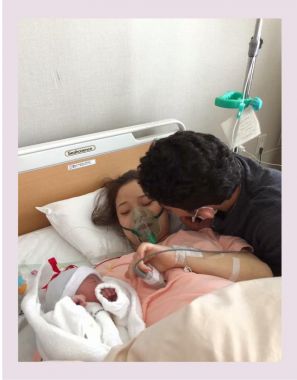
Aline
“I really wanted to have a natural delivery for both of my pregnancies to avoid the long, intensive postpartum care of a C-section. Because of that, I felt somewhat anxious that I needed to have a C-section, especially in my second pregnancy, when I had to look after my toddler while dealing with post-partum care. However, the nurses were very attentive, especially in the first few days of recovery. I also received compression stockings from the hospital, as well as a massage treatment for my legs with special blood circulation equipment for three days.
For C-sections, you are not allowed to have a person accompany you, but at my hospital, they make exceptions for people who need a translator, whether a professional, a family member, or an acquaintance. Since I felt comfortable speaking Japanese, I didn’t request a translator, but that service is available at some hospitals; you just need to check and request it ahead of time. At the moment, however, it’s not possible to have any accompanying family members/friends or translators because of the pandemic.”
Did you face any language barrier challenges? How were you able to overcome them?
Ruth
“Because I have been living in Japan for a long time, I would say that I was able to understand about 80% of what they told me during the checkups and delivery. Of course, I cannot say that I understood everything, but I did not need a translator and the hospital where I gave birth didn’t have a translator anyway.”
Happy
“Yes, I don’t speak much Japanese so my husband would come in a few times to translate for me. Other times, the hospital would arrange for a social worker to accompany me during check-ups for translation.”
Roseane
“I understand very little Japanese, so I had to rely on either my husband or my friend for translations; otherwise, it would’ve been very difficult to go through the process by myself.”
Chiaki
“Not really because I can speak Japanese, so there was no problem.”
Aline
“I was able to communicate easily for the most part since I grew up in Japan. I did struggle occasionally with some medical terminology. However, all my doctors were quite understanding and explained things in a simpler way when needed.”

Are there any resources you would recommend to somebody experiencing pregnancy in Japan?
Ruth
“Yes, I would recommend informing yourself about how to receive maternity leave in Japan. I worked until I was eight months pregnant and was able to take maternity leave soon after, but you need to be paying shakai hoken to be eligible.”
Happy
“Because it was my first pregnancy, my city hall provided me with books, but unfortunately, they were all in Japanese, so I’d occasionally ask my friend, who was also pregnant at the time, to translate them for me. The city hall also held seminars for first-time moms, teaching them how to take care of a firstborn, how to bathe them… basically everything. Although the seminars were in Japanese, I was able to arrange for a social worker to come in and translate for me, and I think I attended about 4 of them. So I would recommend checking what resources are available to you at your local city hall.”
Roseane
“For inexperienced mothers, I would recommend them to watch a lot of YouTube videos, not only about pregnancy in Japan but also anything related to pregnancy and child-rearing that they might not know about.”
Chiaki
“I didn’t really rely on the internet much. Instead, I talked with an acquaintance who had three deliveries in Japan as well as some mothers in the Philippines. I also focused on my spirituality, trusting in God and studying the Bible.”
Aline
I joined a Facebook group called SOS Mamães no Japão (in Portuguese), which I found very useful because I can read information and ask questions about pregnancy and child-rearing from moms across Japan. I also downloaded some of the pregnancy and motherhood apps that I found on the hospital’s pamphlets when I went there for checkups. Though they’re in Japanese, they’re full of illustrations and it’s not too difficult to navigate through.
Here are a few other online English resources on having a baby in Japan to check out:
The Wagamama Diaries: Lifestyle blog focusing on motherhood in Japan and Japanese beauty products by brand consultant and entrepreneur Teni Wada.
The Japan Life: Full of Japan life hacks and tips, Jill also shares her motherhood experience both in her personal blog and YouTube channel.
Tiny Tot in Tokyo: Tokyo-based Canadian mother sharing her journey as a new mom in Japan.
The Yokohama Life: Personal blog by the now Tokyo-based LaShawn Toyoda, sharing her experiences of living and becoming a mom in Japan.

How do you think your pregnancy experience would have been different in your home country?
Ruth
“The only two things that would be different in Ecuador, I think, would be that I would have my family with me and the cost of the birth would be less. However, since Japan provides a lot of assistance if you pay health insurance, I ended up not having to pay anything at all.”
Happy
“Japan has a very reliable medical system. Unfortunately, in Tanzania, you can’t completely trust the hospitals and the medical equipment they have. Especially in my baby’s case, when she had a complication, she was immediately rushed to another hospital. Even though the Japanese medical system is more expensive than in my home country, they handled everything very fast and carefully.”
Roseane
“Since I had a 17 to 18 hour-long labor, in Brazil they would’ve certainly performed a C-section on me instead of encouraging natural childbirth like here in Japan.”
Chiaki
“I really can’t say how it would’ve been different because of the current pandemic. It did hurt me that here, my husband and relatives were not allowed to enter the labor room or anywhere near me. However, maybe it would have been scarier in the Philippines since there’s a lot of traffic there, which would make it hard to get to the hospital in an emergency, and it is common there to do a C-section even when it’s unnecessary.”
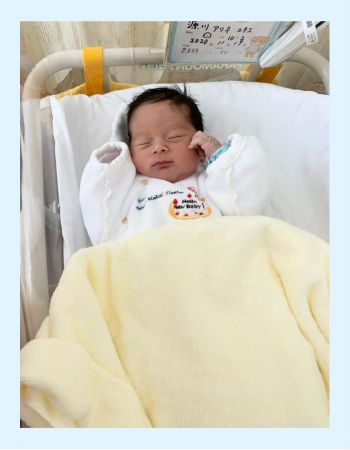
Aline
“My mom also went through two C-sections like me, but she was in Brazil. When I spoke to her about it, some of the differences were, as mentioned before, the type of incision — here it’s usually vertical and there it’s horizontal. Another one was the number of days you’re hospitalized; in Brazil, it’s usually a lot shorter than in Japan. My mother, for example, was discharged after only three days, while I stayed for almost a week. This prolonged stay helped me a lot because the nurses looked after my baby for the first three days while I rested and after the third day, I still received their help whenever I needed it. In Japan, you’re only discharged after they certify that the baby is gaining weight and the mother’s incision site is healing properly; otherwise, the patient can even stay up to 10 days, the average being 5-7 days. Because of the longer hospital stay and postpartum care, as well as the financial incentives provided for people who want to have a baby, I think having a child in Japan has much more benefits than in Brazil.”
What is something that you wish you knew before having a baby in Japan?
Ruth
“Since I had two children here in Japan, I already knew what to do for the most part, but I recommend that first-time mothers get well-informed before planning to have a baby here and make sure to be in a Japanese health insurance plan to help with the costs.”
Happy
“I wish I knew how hard it is to find daycare in Japan when you don’t have a full-time job. They give priority to mothers who work full-time and mothers who work part-time or aren’t employed have to be on waiting lists for months. The only solution is private daycares, but they’re much more expensive.”
Roseane
“If I had known how easy it is to have a baby in Japan and the childbirth incentives available, I would’ve had a child earlier! In addition to that, the Japanese government also has a child support system where you can receive monthly payments until your child is 15 years old.”
Chiaki
“Probably how to use breast pumps. I bought two pumps, a manual pump and an automatic one and they’re both expensive but I wasn’t able to use either of them. By the time my baby was about six or seven months old, it became very difficult to produce more milk, but I didn’t know how to use the breast pumps properly and I wish I hadn’t bought them or practiced them beforehand.”
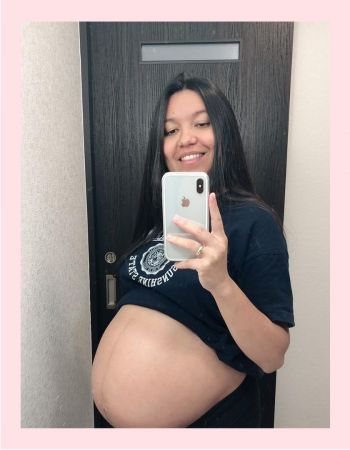
Aline
“Things went a lot smoother for my second pregnancy since I already knew my way around for the most part, but I remember that for my first baby, I was very alarmed at the fact that I would need to have a C-section, knowing that the cost would be higher. If I had known earlier about the subsidy for high-cost surgery or treatment, I wouldn’t have worked more than I needed to save up money for the delivery, which also resulted in a small complication during my labor. I also wish I had learned more about the process of taking maternity leave in Japan because I ended up not taking it for both of my pregnancies. Other than that, though I didn’t need a translator, Japan needs to have more information on which hospitals and clinics have translation services because I believe there still isn’t a single place where you can look that up, and hiring a private service usually costs quite a bit.”
As mentioned by Roseane, the Japanese government provides child benefit payments called jidō-teate (児童手当) to help with child-rearing costs. In order to claim the benefit, the “householder” (or parent with the highest income) must make an application at the local ward office. Monthly payments are deposited until the child is 15 years old, and the amount varies by age and the number of children. For more information on the allowance, you can go to the Cabinet Office’s child benefit page (in Japanese).
Additional sources used in this article:
Japanistry: Childbirth in Japan
Savvy Tokyo: Cost Of Giving Birth In Japan
Originally published August 2021, updated in 2025 for accuracy.







